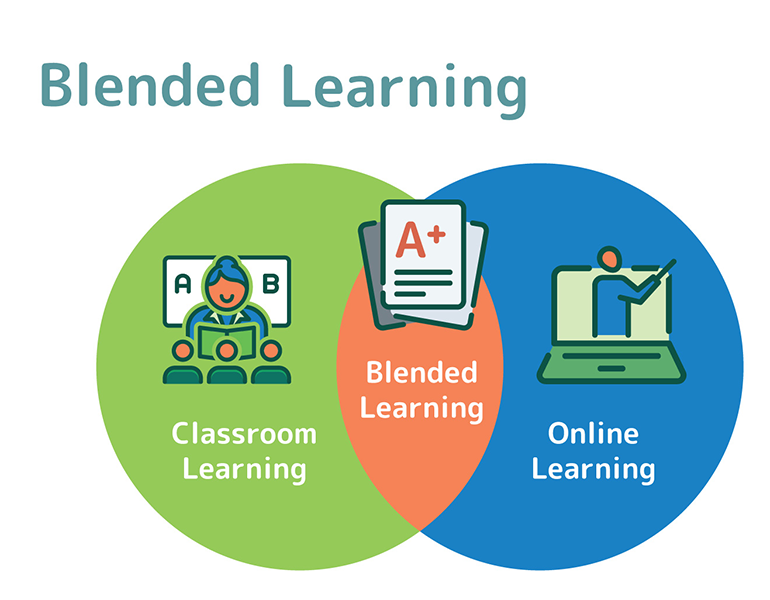Blended Learning Literature Study
- Hannah Anderson
- Feb 28, 2022
- 4 min read
Updated: Mar 12, 2022
Let's reflect. First, consider the changes within EDUCATION throughout the last few hundred years.
At the core, as it remained relatively the same?
If any, what priorities and perspectives have shifted?
Is it enough to prepare learners today, in 2022, for their future?

(Best, 2020)
Over the last three years, school classrooms around the world have shifted from in-person learning, to hybrid models, to fully teaching online, and everything in between. Some schools were prepared and other schools were not ready for these transitions. What has the field of education learned from these learning shifts? Is it best to LEARN from these modifications or return to day-to-day normalcy?
The concept of teaching with technology is not new. Since the 1960's, tech use has specifically been a subject of discussion, study, and practical application for the world of education (Pappas, 2015).
In that same realm, Blended Learning is also not new! The idea of combining face-to-face instruction with using innovative web technologies was defined back in in 2008 (Kyei-Blankson & Ntuli, 2014). Since then, teachers have USED technology in their classrooms. But sometimes mere utilization does not directly translate to best practice teaching methods. THIS is why I have dedicated my Literature Review research study to the concept of Blended Learning and how specific and relevant learning can create the BEST learning spaces for students of today, who will soon become the world leaders of tomorrow.
The following LINK contains a full Literature Review surrounding the topic of Blended Learning.
It answers the big questions of:
What is Blended Learning?
How Can We Know Blended is Best?
What Does the Research Say?
What Can We Do Next?
In addition, the Literature Review explains how Blended Learning can benefit the creation of authentic classroom environments. It also reflects on how growth mindsets can support learners as they strengthen skills while working through their individualized projects and studies.
When looking finitely through a microscope at the field of education, it is easy to get lost in the history and in how classrooms have become the way they are today. Getting hyper-focused on the details instead of the big picture can be overwhelming, and thus, unnecessary through a direct Blended Learning lens. When dissecting the current trends of education, many facets point toward the use and utilization of technology. What should be done next is unknown, because tomorrow brings new problems that we cannot possibly solve today. The best way to prepare our learners for their future is to prepare them for change and challenge. Blended Learning does this by instilling a sense of purpose, an understanding of relevance, the freedom of choice, the pull of a good challenge, and the ability to have a voice. If all of these can be fostered within a safe learning environment where failed attempts are celebrated, then students gain these skills and many more. The broader field of education will thrive through this focus and these successes.
While reading through the Literature Review linked above, there are PROS that include a surface-level understanding of the working definition for ideas surrounding Blended Learning. In addition, the visual figures and models included help explain each subtopic. Every reference is also internally cited as well as listed at the end of the paper for easy review and further understanding of each topic. The paper also includes many examples with specific ideas explained which can help any teacher seeking to know more about this exciting and relatively new topic within researched education. If Blended Learning has been a subject you wish to understand on a deeper level, then this is the perfect way for you to explore!
On the flip side, some CONS show weakness through my Literature Review. Since technology benefits are ever-changing, there is also an unknown when it comes to changes in best practices. What we do well today might change tomorrow! Keeping this in mind, there's additional reading you can do HERE if you'd like to learn more about current developments in this topic. There also might be a few ideas missing. If you are a classroom teacher, for example, I may not have included specific research examples pertaining to your classroom subject or grade. In the future, I would love to continue editing and include additional studies, cases, and models for all educational ages and subjects.
I would love to know what YOU know about the ideas surrounding Blended Learning.
Have you ever tried IMPLEMENTING these techniques in your classroom?
What should I add to my Literature Review?
Feel free to leave feedback or comments below.
Let's have an open discussion about the future of education.
I can't wait to hear from you!
~Hannah
Seeking more knowledge and reading?
Check out my annotated review for additional Blended Learning research.
References
Best, J. (2020, July 15). 8 benefits of blended learning you might have missed. 3P Learning.
https://www.3plearning.com/blog/understanding-blended-learning/
Kyei-Blankson, L., & Ntuli, E. (2014). Practical applications and experiences in k-20
blended learning environments. Information Science Reference.
Pappas, C. (2015, October 8). The history of blended learning. ELearning Industry.
https://elearningindustry.com/history-of-blended-learning



Comments